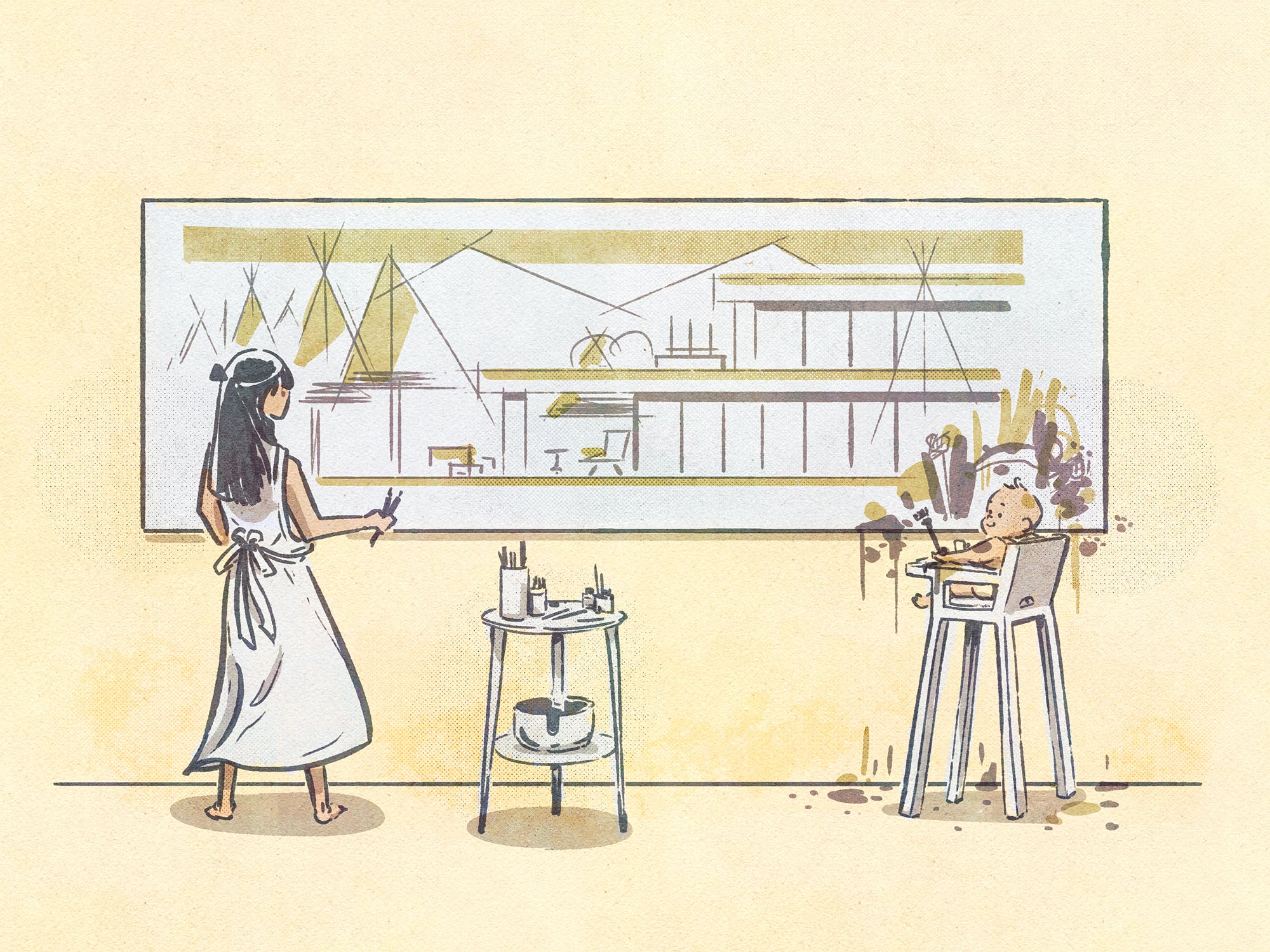UNLOCKING CREATIVITY

Part of what makes a dwelling a home is the energy and activity within it — how we express ourselves and find joy. Sometimes this means freely making or listening to music, suddenly breaking into a song or dance, or listening to the birds as we sketch them. But if we are locked in judgement about how any of our creative efforts might stack up against those of a professional, it stifles us and, often, stops us creating altogether. The joy this drains from our lives is particularly difficult to face when so much of our time is spent at home and so few outward distractions are available.
Throughout the pandemic, many more of us have been ordering art materials. We have been painting. Learning piano. Baking bread. Gardening. Redecorating our homes. In our isolation, we have been finding new courage to explore our creative side. The restrictions placed on our movement have given us the freedom to ignore any internalised judgements on our creative abilities and take enjoyment in what really belongs to all of us: the creative process.
I’ve always found it strange how people tend to categorise themselves as either creative or not. There are people who are quite adamant that they “don’t have a creative bone in their body” so they avoid making art of any kind. The same does not seem to go for sport. If a friend suggests a game of tennis, someone not particularly skilled at it might agree to go along just for fun. They don’t seem to think they need to play at a professional level just to enjoy a couple of hours on the court. But when it comes to creative activities like drawing or painting, often people feel too intimidated, or even unworthy, as if it would be arrogant to suggest they could indulge in the same activity as Picasso or Turner.
The reality is that we are all creative, when we allow ourselves to be. This is most clearly seen in children, who find joy and ease in all manner of creative expression, until they start absorbing the message that there is “good” and “bad” art, there are “creative” and “non-creative” people and that their work might be compared to that of others. This mode of thinking is centred around the idea of art as a commodity. Art in its truest form isn’t about the end product, but about the process.
I once taught a “non-creative” friend how to draw with a simple directive learned at school: Don’t draw what you think you see, draw what you do see. If you see a shoe, don’t draw a shoe, rather draw that small curved line there, followed by that small curved line, create that negative space there, etc. It’s about observing, staying with the process and indulging in that — forgetting about the outcome. This ‘staying in the moment’ is the basis for so much of what we now know about wellbeing. Creating art can feel like a form of meditation as it takes us away from thoughts that otherwise consume us and focuses our minds on a singular task.
For the sake of our wellbeing, to manage our stress, to find enjoyment in the present moment, we owe it to ourselves to find whatever ease we can with the creative process — whatever that may mean for us. All we have to do is turn off that part of our brain that is judging us, pressuring us to create something more impressive, telling us we can’t do it. With the isolation brought by the pandemic, some of us found an escape from that voice. For those of us still searching, there are, as ever, books to guide the way.
The Artist’s Way by Julia Cameron
As a working poet, songwriter, filmmaker and playwright, Julia Cameron has learned a lot about the creative process, and forty years ago started teaching courses in unlocking creativity. Through her teachings, she has helped everyone from artists to lawyers become unblocked and live more creative lives. This book, set up as a 12-week course, provides straightforward, practical tools and exercises that shepherd us to our creative self. No-nonsense insights inspire us on our journey.
How to Be an Explorer of the World by Keri Smith
Set up like a field guide for dipping in and out of at will, this book’s playfulness is reflected in both the book design, handwritten text overlaid on collage, and the contents. It is full of suggested explorations that can be performed in everyday life, from making a sound map of the sounds around you, to matching paint chips with the colours you see in the world. It is a fresh, light-hearted way to be in the moment and ignite creativity through play.
Though there is much talk about returning to some level of normalcy, our lives are still far from a pre-pandemic normal. While we are spending more time at home, more time alone, and away from our usual distractions, let’s allow ourselves to fill our homes with the joy of the creative process.
ILLUSTRATION BY RIMA STUDIO






